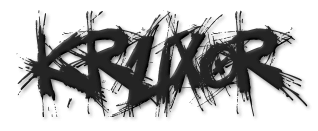border-style
Quick Summary for border-style
Code Usage for border-style
/* Keyword values */ border-style: none; border-style: hidden; border-style: dotted; border-style: dashed; border-style: solid; border-style: double; border-style: groove; border-style: ridge; border-style: inset; border-style: outset; /* top and bottom | left and right */ border-style: dotted solid; /* top | left and right | bottom */ border-style: hidden double dashed; /* top | right | bottom | left */ border-style: none solid dotted dashed; /* Global values */ border-style: inherit; border-style: initial; border-style: revert; border-style: unset; More Details for border-style
border-style
The border-style shorthand CSS property sets the line style for all four sides of an element's border.
Constituent properties
This property is a shorthand for the following CSS properties:
border-bottom-style border-left-style border-right-style border-top-style Syntax
/* Keyword values */ border-style: none; border-style: hidden; border-style: dotted; border-style: dashed; border-style: solid; border-style: double; border-style: groove; border-style: ridge; border-style: inset; border-style: outset; /* top and bottom | left and right */ border-style: dotted solid; /* top | left and right | bottom */ border-style: hidden double dashed; /* top | right | bottom | left */ border-style: none solid dotted dashed; /* Global values */ border-style: inherit; border-style: initial; border-style: revert; border-style: unset; The border-style property may be specified using one, two, three, or four values.
Each value is a keyword chosen from the list below.
Values
<line-style> Describes the style of the border. It can have the following values:
none Like the hidden keyword, displays no border. Unless a background-image is set, the computed value of the same side's border-width will be 0, even if the specified value is something else. In the case of table cell and border collapsing, the none value has the lowest priority: if any other conflicting border is set, it will be displayed.
hidden Like the none keyword, displays no border. Unless a background-image is set, the computed value of the same side's border-width will be 0, even if the specified value is something else. In the case of table cell and border collapsing, the hidden value has the highest priority: if any other conflicting border is set, it won't be displayed.
dotted Displays a series of rounded dots. The spacing of the dots is not defined by the specification and is implementation-specific. The radius of the dots is half the computed value of the same side's border-width.
dashed Displays a series of short square-ended dashes or line segments. The exact size and length of the segments are not defined by the specification and are implementation-specific.
solid Displays a single, straight, solid line.
double Displays two straight lines that add up to the pixel size defined by border-width.
groove Displays a border with a carved appearance. It is the opposite of ridge.
ridge Displays a border with an extruded appearance. It is the opposite of groove.
inset Displays a border that makes the element appear embedded. It is the opposite of outset. When applied to a table cell with border-collapse set to collapsed, this value behaves like groove.
outset Displays a border that makes the element appear embossed. It is the opposite of inset. When applied to a table cell with border-collapse set to collapsed, this value behaves like ridge.
Formal definition
| Initial value | as each of the properties of the shorthand:border-top-style: noneborder-right-style: noneborder-bottom-style: noneborder-left-style: none |
|---|---|
| Applies to | all elements. It also applies to ::first-letter. |
| Inherited | no |
| Computed value | as each of the properties of the shorthand:border-bottom-style: as specifiedborder-left-style: as specifiedborder-right-style: as specifiedborder-top-style: as specified |
| Animation type | discrete |
Formal syntax
<line-style>{1,4}where <line-style> = none | hidden | dotted | dashed | solid | double | groove | ridge | inset | outset
Examples
All property values
Here is an example of all the property values.
HTML<pre class="b1">none</pre> <pre class="b2">hidden</pre> <pre class="b3">dotted</pre> <pre class="b4">dashed</pre> <pre class="b5">solid</pre> <pre class="b6">double</pre> <pre class="b7">groove</pre> <pre class="b8">ridge</pre> <pre class="b9">inset</pre> <pre class="b10">outset</pre> pre { height: 80px; width: 120px; margin: 20px; padding: 20px; display: inline-block; background-color: palegreen; border-width: 5px; box-sizing: border-box; } /* border-style example classes */ .b1 { border-style: none; } .b2 { border-style: hidden; } .b3 { border-style: dotted; } .b4 { border-style: dashed; } .b5 { border-style: solid; } .b6 { border-style: double; } .b7 { border-style: groove; } .b8 { border-style: ridge; } .b9 { border-style: inset; } .b10 { border-style: outset; } Specifications
| Specification |
|---|
| CSS Backgrounds and Borders Module Level 4 # border-style |
See also
The border-related shorthand CSS properties:border, border-width, border-color, border-radius Last modified: Oct 3, 2021, by MDN contributors
Select your preferred language English (US)DeutschEspañolFrançais日本語한국어Polski中文 (简体) Change language
